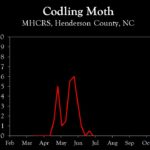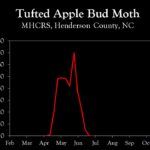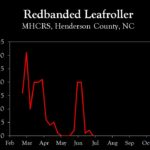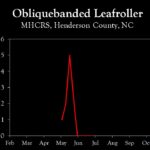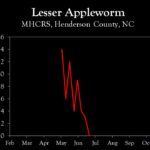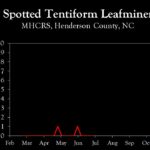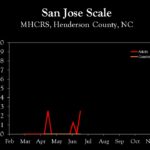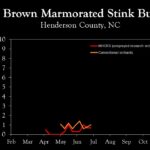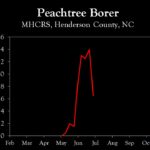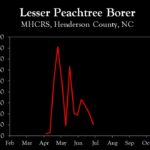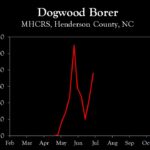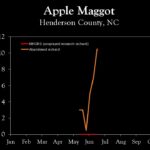WNC Orchard Insect Pest Populations – June 30, 2025
go.ncsu.edu/readext?1080426
en Español / em Português
El inglés es el idioma de control de esta página. En la medida en que haya algún conflicto entre la traducción al inglés y la traducción, el inglés prevalece.
Al hacer clic en el enlace de traducción se activa un servicio de traducción gratuito para convertir la página al español. Al igual que con cualquier traducción por Internet, la conversión no es sensible al contexto y puede que no traduzca el texto en su significado original. NC State Extension no garantiza la exactitud del texto traducido. Por favor, tenga en cuenta que algunas aplicaciones y/o servicios pueden no funcionar como se espera cuando se traducen.
Português
Inglês é o idioma de controle desta página. Na medida que haja algum conflito entre o texto original em Inglês e a tradução, o Inglês prevalece.
Ao clicar no link de tradução, um serviço gratuito de tradução será ativado para converter a página para o Português. Como em qualquer tradução pela internet, a conversão não é sensivel ao contexto e pode não ocorrer a tradução para o significado orginal. O serviço de Extensão da Carolina do Norte (NC State Extension) não garante a exatidão do texto traduzido. Por favor, observe que algumas funções ou serviços podem não funcionar como esperado após a tradução.
English
English is the controlling language of this page. To the extent there is any conflict between the English text and the translation, English controls.
Clicking on the translation link activates a free translation service to convert the page to Spanish. As with any Internet translation, the conversion is not context-sensitive and may not translate the text to its original meaning. NC State Extension does not guarantee the accuracy of the translated text. Please note that some applications and/or services may not function as expected when translated.
Collapse ▲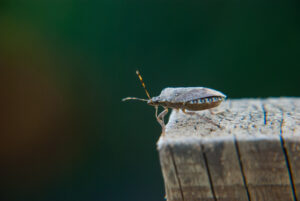 Codling Moth: In lower elevation orchards (i.e., those ranging from about 800 to 1300 ft) an insecticide targeting second generation codling moth should have been applied by this time. Optimum timing is between 1400 and 1450 DD, and in Cleveland County about 1550 DD have accumulated as of June 30. If an application has not been applied in the past 7 to 10 days, an application should be considered, especially in those orchards not using mating disruption.
Codling Moth: In lower elevation orchards (i.e., those ranging from about 800 to 1300 ft) an insecticide targeting second generation codling moth should have been applied by this time. Optimum timing is between 1400 and 1450 DD, and in Cleveland County about 1550 DD have accumulated as of June 30. If an application has not been applied in the past 7 to 10 days, an application should be considered, especially in those orchards not using mating disruption.
In Henderson County (elevation about 2050 ft), a total of 1228 DD have accumulated as of June 30. We are expected to hit 1400 in about a week, so this weekend or early next week would be a good time for this application.
In orchards that have no damage and where moth captures in pheromone traps remain low, an insecticide targeting the second generation may not be necessary. This is most often the case in orchards using mating disruption.
Brown Marmorated Stink Bug (BMSB): In lower elevation orchards, emergence of first generation BMSB adults, the most damaging life stage, is expected to begin in about 10 days. Emergence begins at about 740 DD, and in Cleveland County 612 DD accumulations as of June 30. An initial insecticide spray is recommended between about 5 and 10% emergence (=760 – 780 DD), which is expected in this area in about two weeks.
In Henderson County, DD accumulations as of June 30 were only at 460, so we are at least a month away from initial emergence.
European Red Mite: Despite the warm weather, European red mite populations remain low throughout the region. As mentioned last week, predatory mite numbers have been high in almost all orchards we’ve sampled in recent weeks. Historically, if ERM do not appear by the first week of July, in many cases they are unlikely to build to damaging levels.
2025 Average Weekly Trap Captures
| HENDERSON COUNTY | |||
| Insects per trap | |||
| Jun 16 | Jun 23 | Jun 30 | |
| Codling moth | 0.0 | 0.5 | 0.0 |
| Oriental fruit moth | 12.5 | 19.0 | 16.0 |
| Tufted apple bud moth | 5.0 | 0.0 | 0.0 |
| Redbanded leafroller | 1.0 | 2.0 | 0.0 |
| Obliquebanded leafroller | 0.0 | 0.0 | 0.0 |
| Lesser appleworm | 3.0 | 0.0 | 0.0 |
| Apple maggot (unsprayed research orchards) | 0.0 | 0.0 | 0.0 |
| Apple maggot (abandoned orchard) | 5.0 | n/a | 10.5 |
| Brown marmorated stink bug (commercial orchards) | 0.6 | n/a | 1.0 |
| Brown marmorated stink bug (unsprayed research orchards) | 1.0 | 0.7 | 0.7 |
| Spotted tentiform leafminer | 0.0 | 0.0 | 0.0 |
| Dogwood borer | 20.0 | 46.0 | 76.0 |
| Peachtree borer | 12.5 | 14.0 | 6.5 |
| Lesser peachtree borer | 27.5 | 20.0 | 10.5 |
| San Jose scale | 1.3 | 0.7 | 2.5 |
*Note that these averages illustrate only the timing of insect emergence and fluctuations in populations, and are not representative of population levels in any given orchard. The only way to have an accurate assessment of an individual orchard’s populations is to set up traps in that orchard.
2025 Accumulated Degree Days
| HENDERSON COUNTY | ||||
| Jun 16 | Jun 23 | Jun 30 | ||
| Codling moth (Biofix: April 21) | 870 | 1064 | 1222 | |
| Oriental fruit moth (Biofix: March 17) | 1537 | 1770 | 1943 | |
| Tufted apple bud moth (Biofix: April 14) | 1215 | 1448 | 1621 | |



